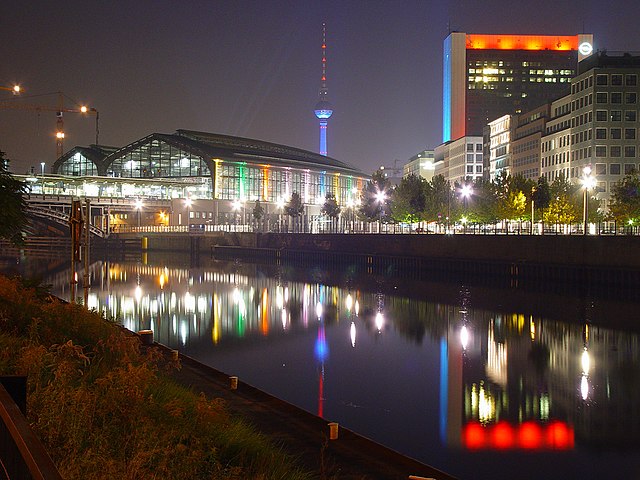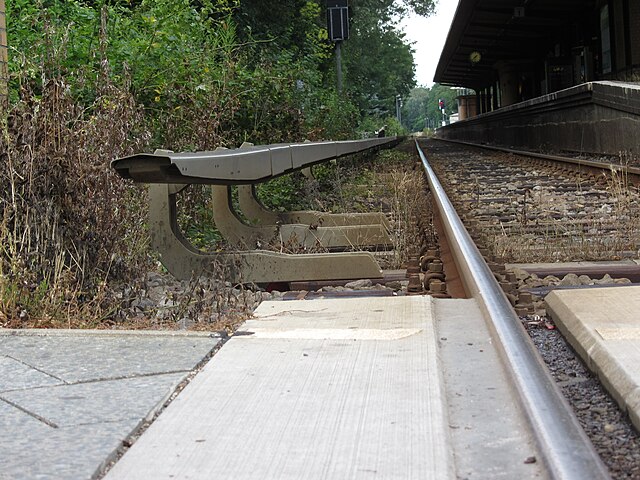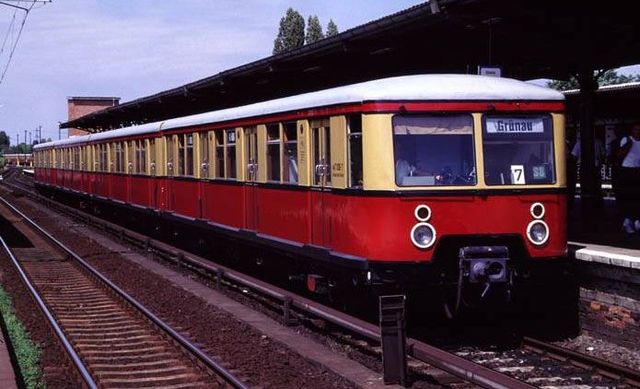The North–South S-Bahn Tunnel is the central section of the North–South transversal Berlin S-Bahn connection crossing the city centre. It is not to be confused with the Tunnel Nord-Süd-Fernbahn, the central tunnel part of the North–South main line used by intercity and regional trains. The S-Bahn North–South line encompasses the route from Bornholmer Straße and Gesundbrunnen via Friedrichstraße and Anhalter Bahnhof to Papestraße and Schöneberg.
Tunnel just north of Potsdamer Platz station with the reversal and staging yard in the centre
Tunnel just south of Potsdamer Platz station with the unused ramp for the Ringbahn branch connection
Flooded North–South Tunnel 1946
S-Bahnhof Potsdamer Platz
The Berlin S-Bahn is a rapid transit railway system in and around Berlin, the capital city of Germany. It has been in operation under this name since December 1930, having been previously called the special tariff area Berliner Stadt-, Ring- und Vorortbahnen. It complements the Berlin U-Bahn and is the link to many outer-Berlin areas, such as Berlin Brandenburg Airport. As such, the Berlin S-Bahn blends elements of a commuter rail service and a rapid transit system.
Berlin Friedrichstrasse railway station, crossing point for the Stadtbahn and the Nord-Süd-Tunnel routes of the Berlin S-Bahn
Berlin S-Bahn was converted from steam to third rail electrification starting in the late 1920s. The rail is bottom-contact. Seen here at the level crossing at Lichtenrade station
Some Type 477 trains, built before World War II, remained in service until the early 21st century.
Alexanderplatz is an important transport hub in eastern Berlin.







